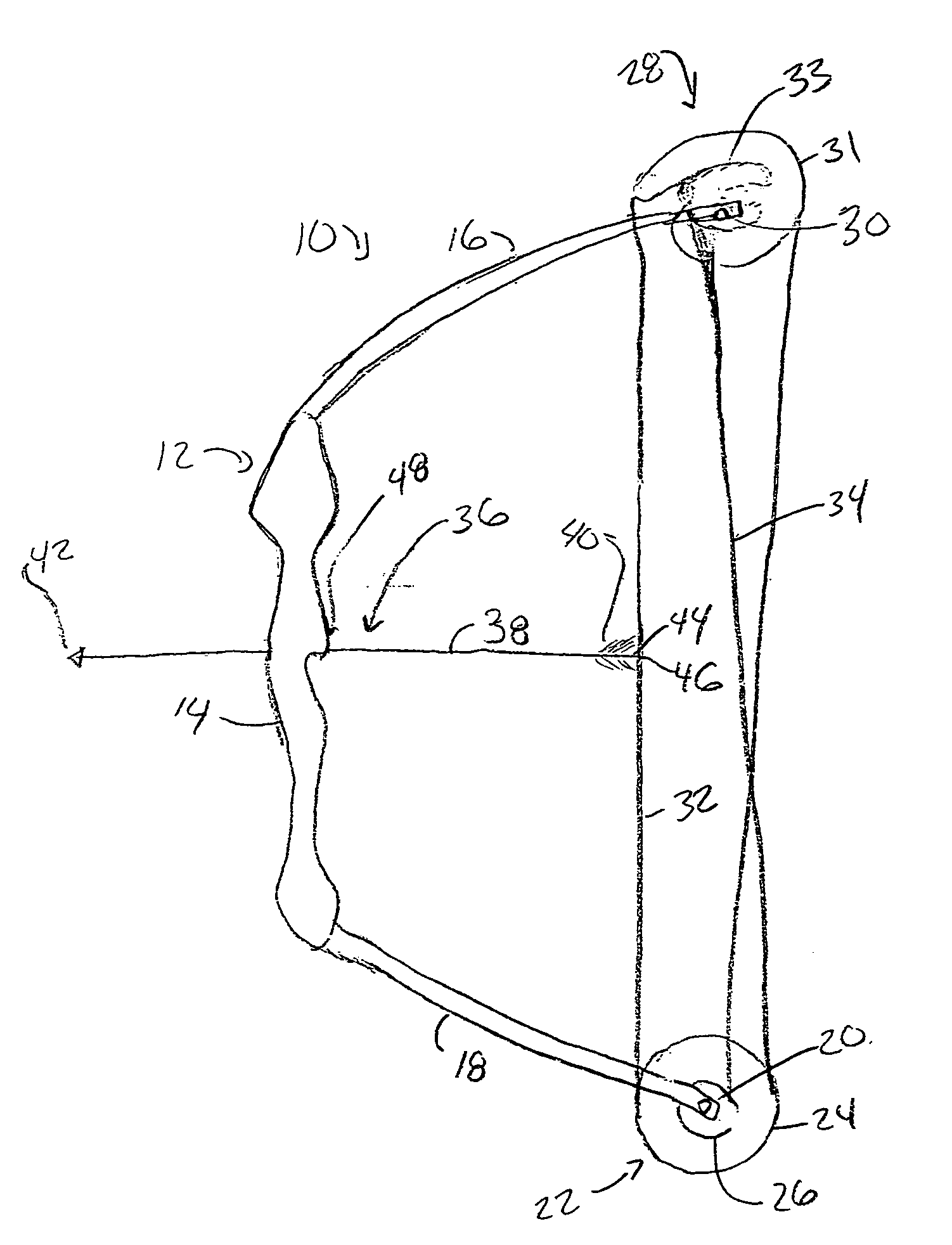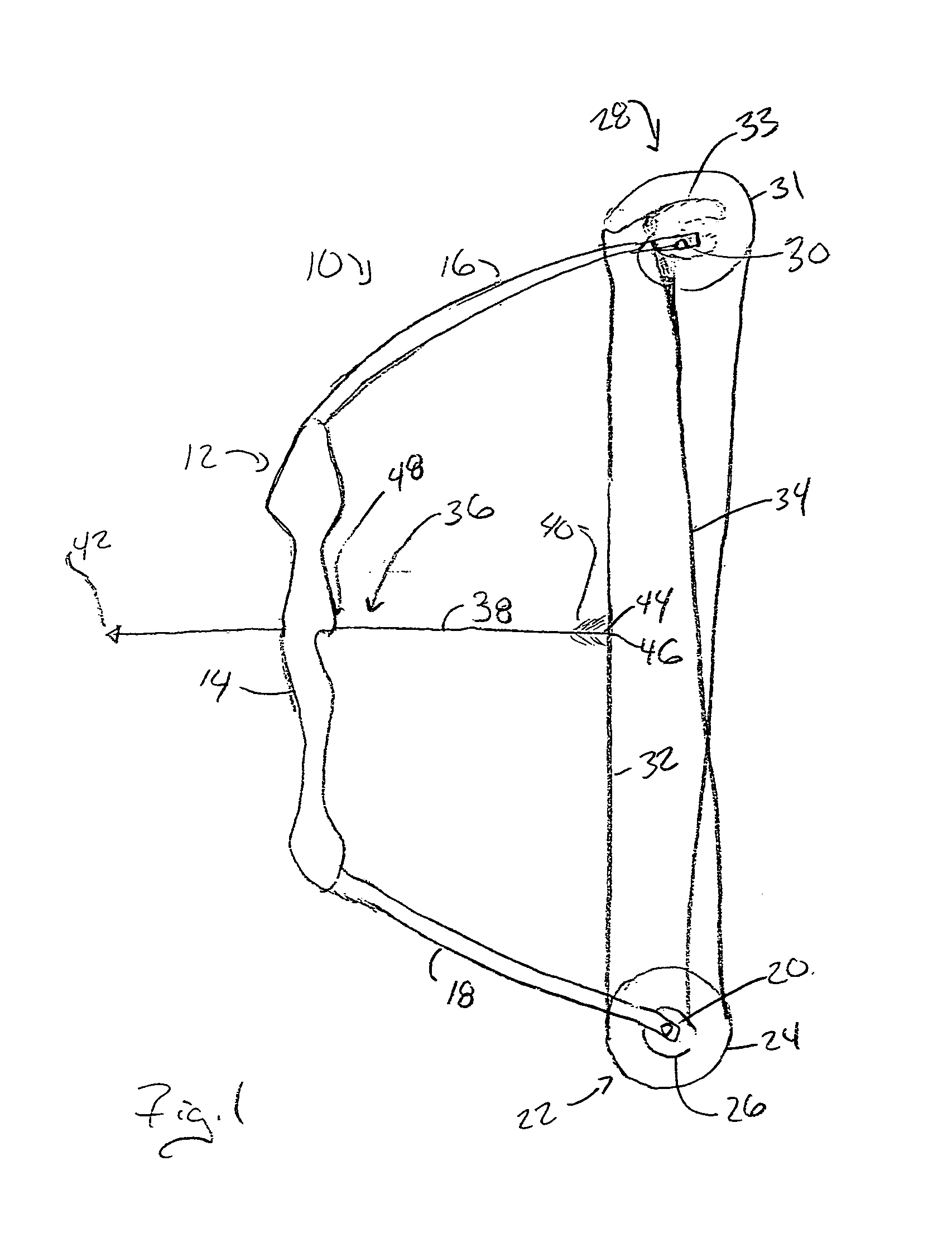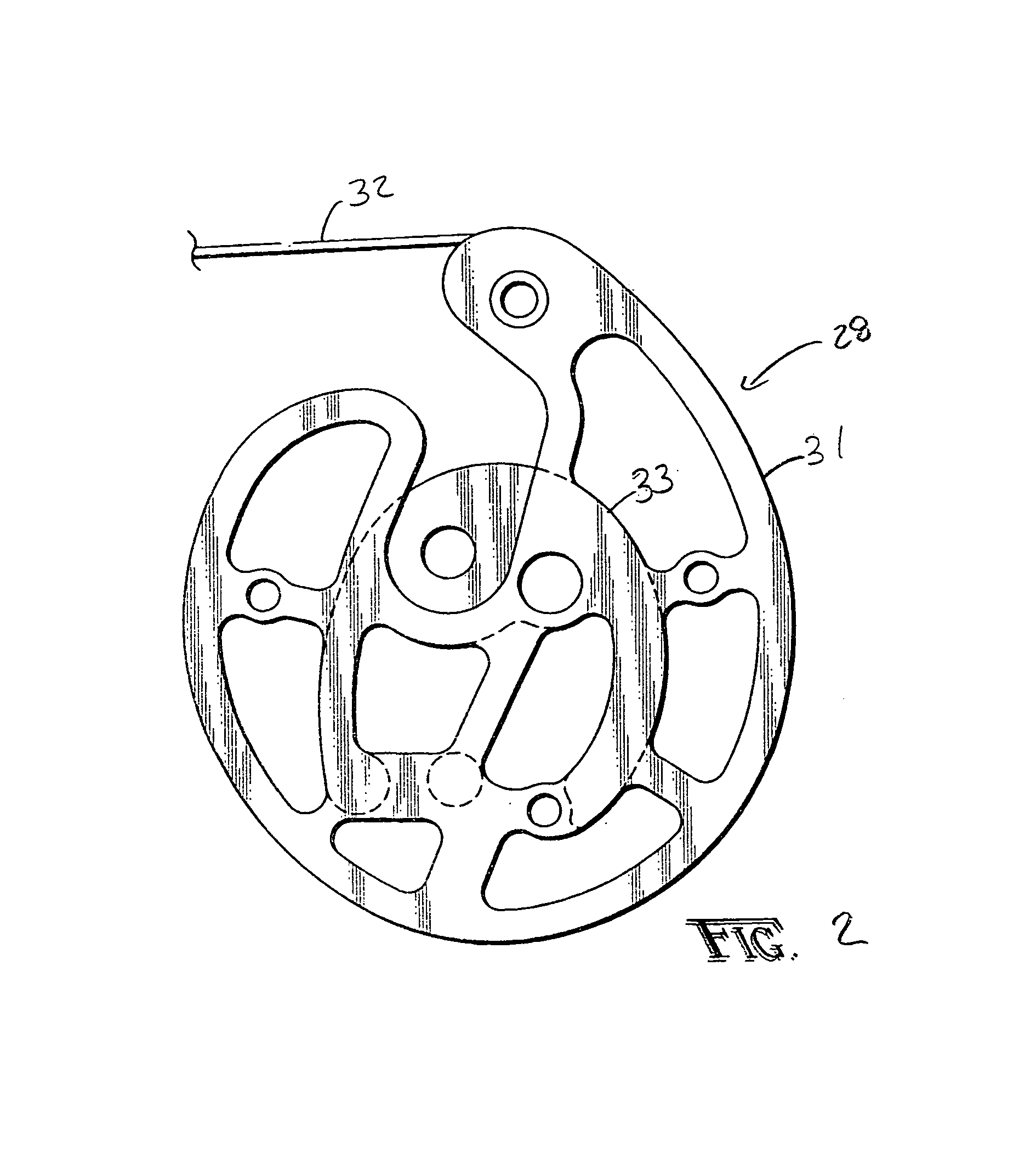Bow
a bow and bowstring technology, applied in the field of bows, can solve the problems of reducing the draw length and powerstroke of the bow, sacrificing speed, and requiring cam synchronization, so as to reduce the force required to draw the bowstring, increase the powerstroke, and increase the speed of the arrow
- Summary
- Abstract
- Description
- Claims
- Application Information
AI Technical Summary
Benefits of technology
Problems solved by technology
Method used
Image
Examples
Embodiment Construction
[0016]A bow according to the present invention is shown generally as (10) in FIG. 1. The bow (10) includes a riser (12) provided with a handle (14) in a manner such as that known in the art. Coupled to the riser (12) is a first limb (16) and second limb (18). A pulley is journaled to the first limb (16) with an axle (20) which acts as journal point. The pulley (22) has an outer track (24) and an inner track (26). The pulley (22) is preferably journaled to the first limb (16) in a manner which positions a portion of the pulley (22) rearward and outward of the space defined between the limbs (16) and (18). As shown in FIG. 1, a second string guide, which in the preferred embodiment is a cam (28), is journaled to the second limb (18) at a second journal point (30). The cam (28) is journaled to the second limb (18) so that at least a portion of the cam (28) extends rearward and outward of the area defined between the limbs (16) and (18). The cam (28) is preferably constructed as shown i...
PUM
 Login to View More
Login to View More Abstract
Description
Claims
Application Information
 Login to View More
Login to View More - R&D Engineer
- R&D Manager
- IP Professional
- Industry Leading Data Capabilities
- Powerful AI technology
- Patent DNA Extraction
Browse by: Latest US Patents, China's latest patents, Technical Efficacy Thesaurus, Application Domain, Technology Topic, Popular Technical Reports.
© 2024 PatSnap. All rights reserved.Legal|Privacy policy|Modern Slavery Act Transparency Statement|Sitemap|About US| Contact US: help@patsnap.com










